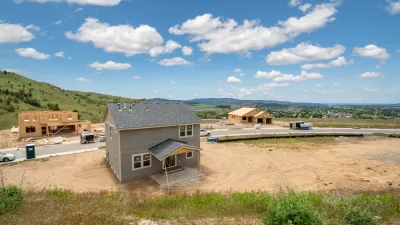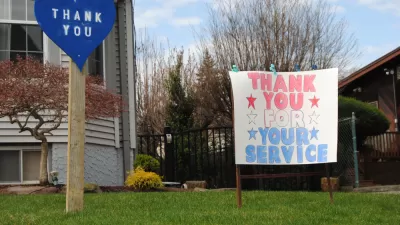The explosive growth of the Dallas-Fort Worth metropolitan area in recent years has mostly gone toward rental housing, and now the area has one of the lowest homeownership rates in the country.
Steve Brown reports on what could be a surprising takeaway from the Census Bureau's recent Housing Vacancy Survey (HVS): "Dallas-Fort Worth is on its way to becoming a city of renters."
In fact, the Dallas-Fort Worth area ranks eighth among major U.S. cities with the lowest percentage of homeowners, reports Brown. That puts the North Texas city just behind San Francisco on the list. In San Francisco, 55.8 percent of residents own homes. In Dallas, 56.3 percent of residents own homes.
Even a slightly younger version of Dallas-Fort Worth stands in contrast to the current homeownership rate. According to Brown, "D-FW’s homeownership rate has fallen sharply since a peak of 65.2 percent in mid 2010."
In an earlier article, Brown noted that the Dallas-Fort Worth area outpaced the rest of the country in the growth of its apartment market, with about 30,000 rental units under construction.
The fourth quarter HVS was full of surprises from recession trends—including a quick jump in household growth.
FULL STORY: D-FW has one of the country’s lowest homeownership rates

Study: Maui’s Plan to Convert Vacation Rentals to Long-Term Housing Could Cause Nearly $1 Billion Economic Loss
The plan would reduce visitor accommodation by 25,% resulting in 1,900 jobs lost.

North Texas Transit Leaders Tout Benefits of TOD for Growing Region
At a summit focused on transit-oriented development, policymakers discussed how North Texas’ expanded light rail system can serve as a tool for economic growth.

Why Should We Subsidize Public Transportation?
Many public transit agencies face financial stress due to rising costs, declining fare revenue, and declining subsidies. Transit advocates must provide a strong business case for increasing public transit funding.

How to Make US Trains Faster
Changes to boarding platforms and a switch to electric trains could improve U.S. passenger rail service without the added cost of high-speed rail.

Columbia’s Revitalized ‘Loop’ Is a Hub for Local Entrepreneurs
A focus on small businesses is helping a commercial corridor in Columbia, Missouri thrive.

Invasive Insect Threatens Minnesota’s Ash Forests
The Emerald Ash Borer is a rapidly spreading invasive pest threatening Minnesota’s ash trees, and homeowners are encouraged to plant diverse replacement species, avoid moving ash firewood, and monitor for signs of infestation.
Urban Design for Planners 1: Software Tools
This six-course series explores essential urban design concepts using open source software and equips planners with the tools they need to participate fully in the urban design process.
Planning for Universal Design
Learn the tools for implementing Universal Design in planning regulations.
City of Santa Clarita
Ascent Environmental
Institute for Housing and Urban Development Studies (IHS)
City of Grandview
Harvard GSD Executive Education
Toledo-Lucas County Plan Commissions
Salt Lake City
NYU Wagner Graduate School of Public Service





























